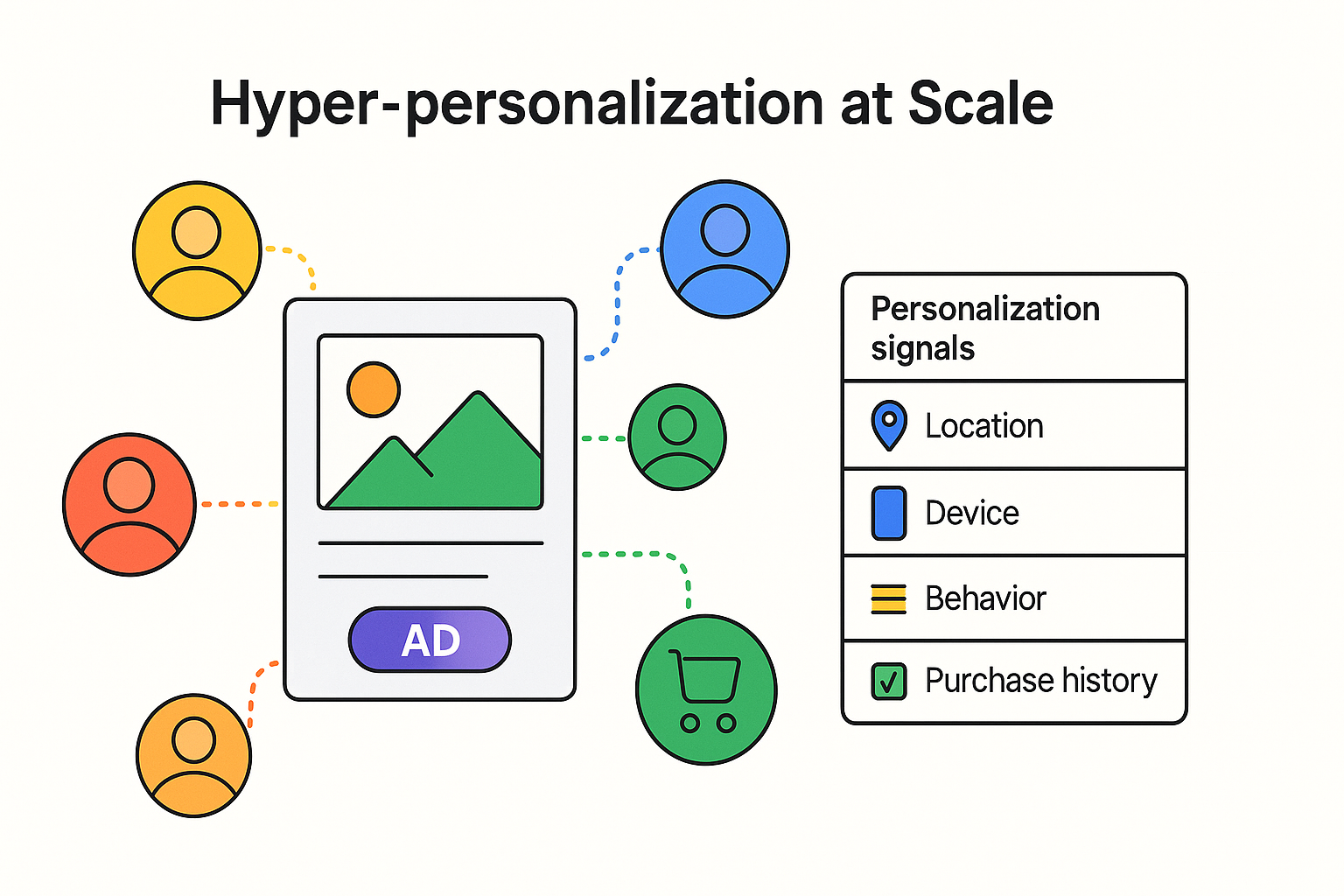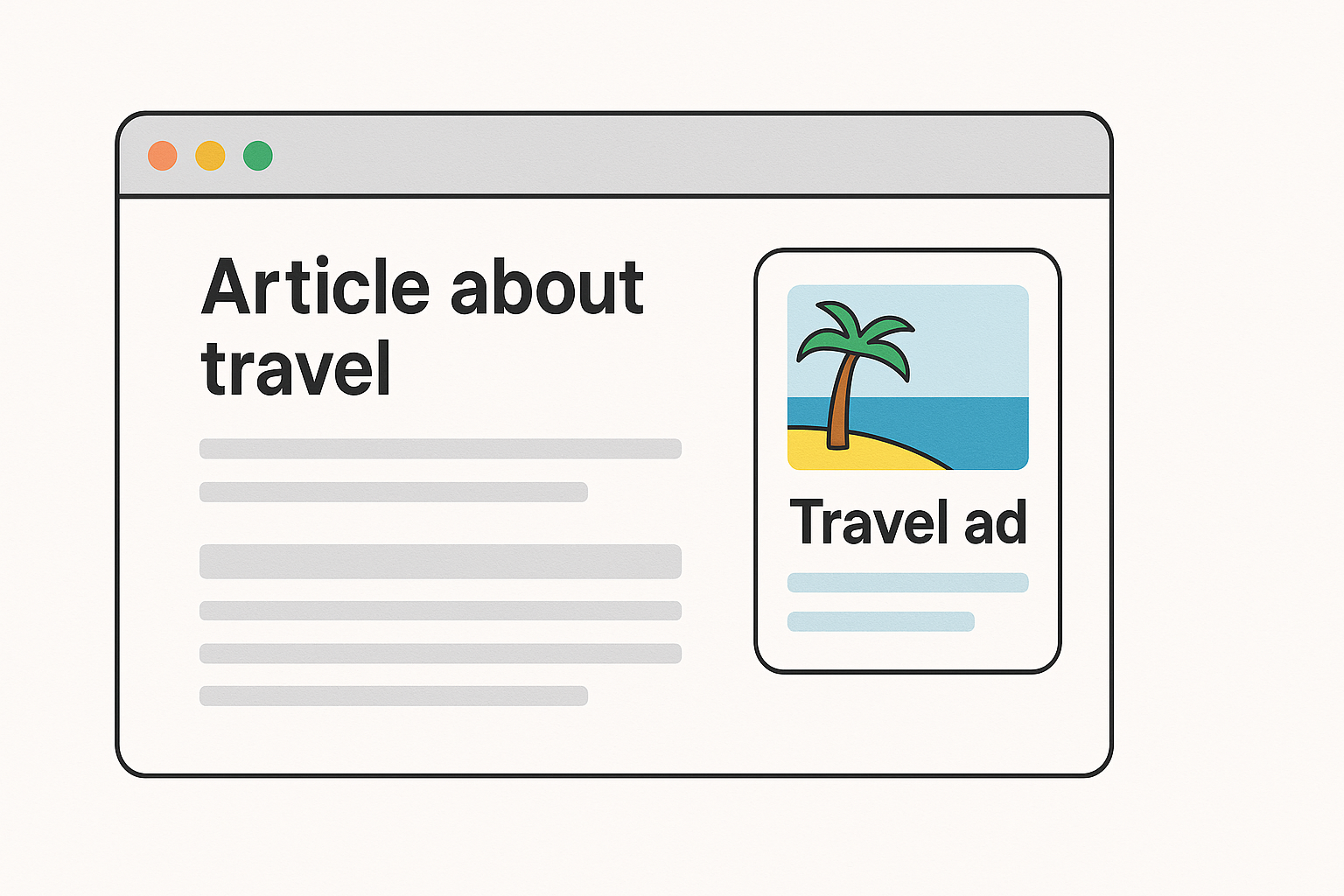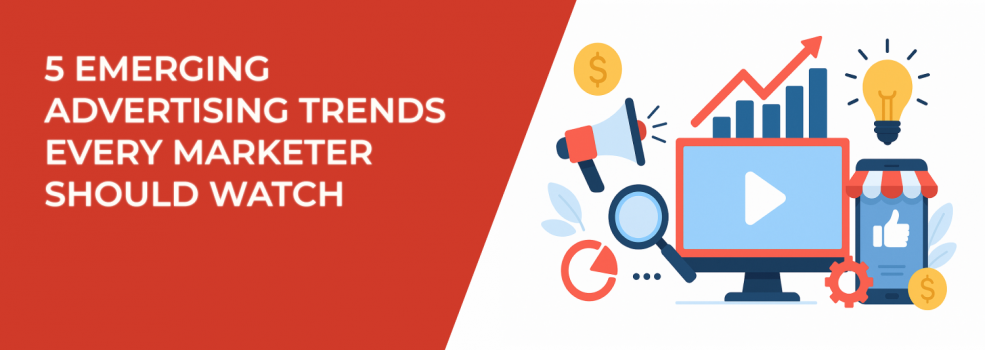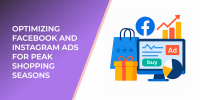Advertising is evolving faster than most brands can adapt. What worked last year may already feel outdated, while new AI tools, privacy rules, and shifting user behaviors keep changing the game. For marketers, this isn’t a time to play catch-up — it’s time to stay ahead.
Here are five key advertising trends shaping 2025/2026 and beyond, plus actionable strategies to help you turn each one into measurable growth.
1. Generative AI & Creative Automation — Your New Creative Accelerator
AI is no longer just a buzzword — it’s a creative partner. Generative AI now helps advertisers brainstorm, design, and test ad variations faster than ever. From text-to-image tools to automated copy generation, marketers can scale creative testing without ballooning production costs.
Why it matters:
Ad fatigue and creative stagnation are two of the biggest performance killers. AI-powered creative tools make it possible to refresh ad visuals and copy weekly, even daily, without straining resources. This matters because platforms like Meta reward advertisers who test and iterate often — performance improves when freshness stays high.
How to implement this trend:
-
Create AI-assisted ad variants. Use text and image generation tools to produce multiple headline, visual, and CTA options in minutes. Then use A/B testing frameworks (see The Future of Facebook Ads: Trends to Watch) to find your best performers.
-
Automate creative testing. Tools like Meta’s Advantage+ or Google’s AI creative optimization can cycle through combinations automatically. For practical steps, check The Best AI Text and Image Generators in 2024.
-
Keep the human touch. Always review AI-generated creatives for brand tone and compliance. AI should enhance your team’s output, not replace it.
Example: A DTC skincare brand can use AI to quickly generate five product video variations — one focusing on results, another on natural ingredients, another on social proof. Testing them simultaneously helps reveal which emotional angle converts best before scaling budget.
2. Hyper-Personalization at Scale — From Broad Reach to Individual Relevance
Consumers now expect experiences built for them. Generic ads are ignored, but personalized ones — tuned to context, behavior, and timing — drive deeper engagement. The era of hyper-personalization has arrived, powered by AI, automation, and smarter segmentation.

Why it matters:
People respond to relevance. A message that feels tailor-made for their goals or pain points performs exponentially better. Platforms like Meta and Google Ads now support real-time personalization, making it easier to deliver contextually aligned messages across the entire buyer journey.
How to implement this trend:
-
Start with strong audience foundations. Learn how to define and refine buyer groups using How to Define a Target Audience for Marketing: A Step-by-Step Guide.
-
Use Dynamic Creative Optimization (DCO). Let algorithms test combinations of ad assets and automatically show each user the most relevant version.
-
Integrate first-party data. Retarget based on real interactions — email clicks, website visits, or past purchases — instead of broad demographics.
Example: A travel company could show different versions of the same ad — beach escapes to warm-climate users, ski resorts to colder regions — while keeping the same campaign objective. Over time, AI identifies which audiences respond best and optimizes toward them automatically.
Hyper-personalization doesn’t just improve click-through rates — it builds brand affinity. People remember brands that “get them.”
3. Contextual & Privacy-First Advertising — The Return of Smart Context
Privacy rules have reshaped digital advertising. As cookies fade and tracking tightens, marketers are rediscovering an old but powerful idea: contextual targeting. Instead of relying on user data, ads align with the content people are already consuming.

Why it matters:
It’s privacy-safe, future-proof, and effective. With iOS updates and consent fatigue limiting data access, contextual relevance keeps your message aligned with intent. You reach audiences in moments when they’re naturally more open to your offer.
How to implement this trend:
-
Target intent-rich content. Place ads on websites or articles directly connected to your niche. For instance, a SaaS brand advertising on productivity blogs will reach users actively researching related tools.
-
Pair with AI-based semantic analysis. Modern ad platforms can analyze content sentiment and meaning, ensuring better alignment.
-
Combine with first-party targeting. Layer contextual signals over CRM data or engaged user lists for hybrid accuracy.
Want to see how privacy shifts affect Meta Ads? Check Combating iOS Privacy Changes: Smart Ad Targeting Strategies for Facebook.
Example: A home improvement retailer can run YouTube pre-roll ads on DIY tutorial videos or articles about home renovation. The audience is already primed for purchase, even without tracking cookies.
Contextual targeting is about being relevant in the moment — and that makes your message feel less intrusive, more natural.
4. Predictive & Prescriptive Analytics — Turning Data Into Direction
Marketers have plenty of data. The challenge now is turning that data into action. Predictive analytics forecasts outcomes (like which audience segments are likely to convert), while prescriptive analytics suggests the best next step (like shifting budget from one channel to another).
Why it matters:
Instead of reacting to campaign results after the fact, predictive analytics helps you anticipate performance — saving budget and improving agility.
How to implement this trend:
-
Leverage built-in AI tools. Platforms like Meta’s Advantage+ can automatically allocate budget to high-performing ad sets. See How to Improve Campaign Performance with Meta Advantage+.
-
Use CRM integration. Combine sales and ad data to identify which audiences produce high-value customers. Then, use predictive scoring to target similar lookalikes.
-
Adopt data dashboards. Build dashboards that track leading indicators — engagement rate, add-to-cart rate, early ROAS shifts — so you can act before results drop.
Example: A subscription-based app uses predictive models to spot early churn signals. By running retention ads to those users before cancellation, they improve lifetime value by 15% without extra acquisition costs.
Predictive analytics isn’t about guessing — it’s about seeing the patterns your competitors miss.
5. Cross-Media, Omnichannel Synergy — From Single Ads to Full Ecosystems
Users no longer stay on one platform. They jump from TikTok to Instagram to Google in seconds — which means your campaigns must follow seamlessly. The next era of advertising is about integration, not isolation.
Why it matters:
Consistent messaging across channels amplifies impact. When a user sees your ad on multiple touchpoints with cohesive visuals and tone, recognition builds faster, and conversions cost less.
How to implement this trend:
-
Plan campaigns as ecosystems. Map your buyer’s full journey across platforms — from awareness to conversion. You can explore how to align channels in Cross-Platform Strategy: How to Synchronize Facebook and Instagram Ads.
-
Unify data sources. Use Meta Pixel, Google Analytics, and CRM integrations to create a single performance view.
-
Build narrative sequences. For instance, show a storytelling ad on Instagram Reels, retarget with an educational carousel, then close with a direct offer through Facebook Lead Ads.
Example: A coaching brand runs inspirational Reels to drive awareness, then retargets engaged viewers with testimonial ads, and finally pushes a time-limited sign-up offer. Each stage tells a connected story rather than a random collection of ads.
For more ideas, check Facebook Ads Funnel Strategy: From Audience Identification to Conversion.
Cross-media synergy transforms fragmented ads into brand experiences that feel intentional, cohesive, and professional.
Final Thoughts — Don’t Just Observe, Experiment
Emerging trends only matter if you act on them. The advertisers winning in 2025/2026 are those who test fast, learn fast, and adapt early.
Start small:
-
Use AI tools to refresh one campaign’s creatives.
-
Launch a hyper-personalized ad variation using dynamic content.
-
Run a contextual test alongside your audience targeting campaigns.
-
Integrate predictive analytics to guide weekly optimizations.
-
Build your first multi-channel ad flow connecting Facebook, Instagram, and Google.
Because the future of advertising won’t belong to the biggest spenders — it’ll belong to the fastest learners.

